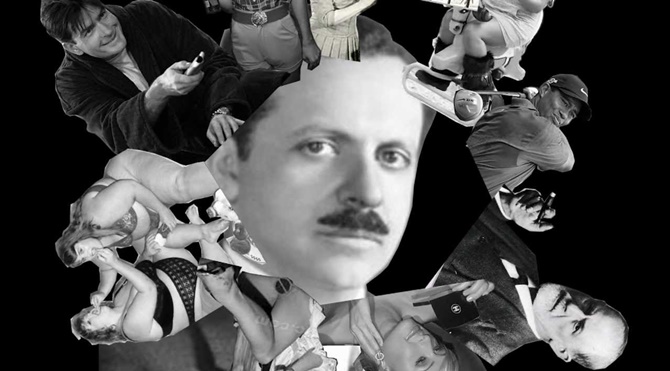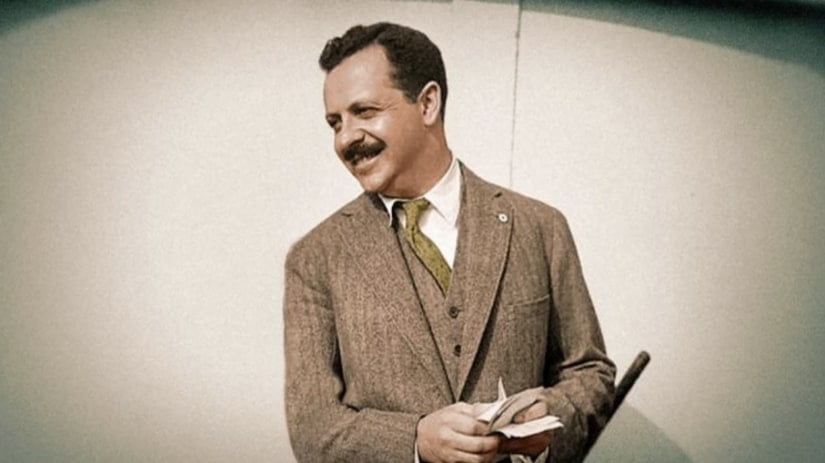Inventor of the PR profession: Who is Edward Bernays?
Edward Beynars, one of the founders of modern public relations, defines public relations as follows: The activity of persuasion through the transfer of information with the aim of gaining the support of the public.

The reason for the existence of public relations is to influence the public, in other words, the public on this or that issue, and to gain their support and trust in the subject matter. In terms of business, the purpose of public relations is; creativity, improvement, and improving the company image. In terms of society; understanding, sympathy, and participation. Creating a positive image, which is one of the aims of public relations for the company, directly affects the gain of sympathy, which is the aim of public relations for society.

Edward Louis Bernays (November 22, 1891 − March 9, 1995) was an American theorist, considered a pioneer in the field of public relations and propaganda, and referred to in his obituary as "the father of public relations". His best-known campaigns include a 1929 effort to promote female smoking by branding cigarettes as feminist "Torches of Freedom", and his work for the United Fruit Company in the 1950s, connected with the CIA-orchestrated overthrow of the democratically elected Guatemalan government in 1954. He worked for dozens of major American corporations including Procter & Gamble and General Electric, and for government agencies, politicians, and nonprofit organizations.
The concept of public relations was first used by the then President of the United States, Thomas Jefferson, in a message about the foreign relations of the United States sent to the 10th Congress in 1807. Later, a New York lawyer named Dorman Eaton drew attention to this concept with a speech he gave in 1882 to the graduates of Yale University Law School, which was related to "Public Relations and Assignments of the Legal Profession". However, the conditions of the period are not very favorable for this phenomenon to be fully understood, developed, and spread. Mass media have not developed and become widespread, democratic gains have not been adequately achieved, and the understanding of pluralism and social responsibility has not developed. Such developments have gained momentum mainly since the early 1900s, and in this process, the works of Ivy Lee, a journalist, and Edward L. Bernays, who are interested in the academic dimension of the subject, are considered important milestones.
Journalist Ivy Lee established the first public relations office in 1916. Ivy tried to bring the press and the business community closer together, and the business community had the opportunity to address the public for the first time with the prepared bulletins. The public has begun to be enlightened on wage policy, supply-demand, and monopolies. Ivy Lee emphasized that relations with the press are not sufficient and that a public relations expert should adopt the importance of informing and enlightening the public about the organizations he serves.
Founded in 1919, the "John Price Jones Organization and Press Consultancy" company is the world's first official public relations company. Four years after the founding of the company, the first public relations courses began to be taught at New York University. The first person to teach this course was Edward Bernays. In 1924, an American agency opened an office in Paris and organized a series of conferences for French businessmen. Thus, gradually, public relations began to be regarded as a simple means of gaining the goodwill of the people and the masses. Public relations courses began to be taught at Harvard, Yale, and Columbia Universities.
Following the Great Crisis of 1929, voter and consumer preferences and giving importance to public opinion developed rapidly. Thus, with the adoption of public relations as a profession between 1930-1940, practices began to spread to wider segments.
Here, one should not forget the responsibilities of the public relations specialist: responsibilities to clients and employers, responsibilities to society, responsibilities to the media, and responsibilities to colleagues.
One of the permanent definitions of public relations was made by Edward Bernays in his book "Crystallizing Public Opinion" in 1923. In the book, he described public relations as “providing harmony and understanding between the public and the organization”. This definition has remained valid until today and has been supported by the definitions of those who describe public relations as "mutual communication, cohesion, understanding, and adaptation". Bernays; developed the first definition of public relations as “an effort to obtain public support, through information, persuasion, and adaptation/adjustment, for any activity, cause, movement or institution”.
Edward Lee Bernays was born on November 22, 1891, in Vienna, Austria. He is a maternal and paternal relative of the famous psychoanalyst Sigmund Freud. Bernays is considered one of the two founders of modern public relations. While in Vienna to attend the Versailles peace conference near Paris in the winter of 1918-19, in exchange for sending a box of cigarettes to his uncle, Freud sends him his last work, A General Introduction to Psychoanalysis; this work was on the argument that people have hidden irrational forces inside them. This led Bernays to believe that people could be persuaded not only to support an argument but also to adopt other ways of thinking and adapt their regular habits and ideas.
After returning from Europe in 1919, he sets up a business in New York with his wife, Doris Fleischman, as a public relations consultant; He coined the term instead of propaganda, as he explained in a later interview. They work shoulder to shoulder with Doris Fleischman, whom he married in 1922. Doris Fleischman, who showed great success in writing and publishing during their 58-year partnership, when their two children were born, also makes important contributions to the public relations studies of Edward Bernays.
In his book "Biography of an Idea", Bernays states that when he opened his first office in 1918, he needed a word that had a different meaning than press agency, public enlightenment, or publicity specialist to describe his work, and later on he adopted the phrase "public relations consultancy", but that it was difficult to adopt it. Means it's not easy at all. In the same work, Bernays wrote about the function of public relations in the publication called “Contact”, of which Doris Bernays was the editor, and sent this magazine to about 1500 managers, public opinion leaders, and editorial directors, and in 1922, the expression was gradually changed. states that he has begun to settle in.
Bernays also wrote various books and articles, and Freud's influence is felt in almost all of these works. His book Crystallizing Public Opinion is one of the most successful works on determining public relations theoretically. Here, the professional role of the public relations consultant is characterized as an intermediary: “A public relations consultant is a person who helps and interprets between the client and his target audience (Public relations consultant) helps shape the client's actions as well as forming public opinion. its social importance is also emphasized: “The social value of the PR consultant lies in bringing to the public's attention social benefits and events that they might not otherwise readily accept.”
During the First World War, when the administration used public relations as a propaganda tool, Edward Bernays, along with Walter Lippmann, served on the Creel Commission alongside US President Woodrow Wilson. Lippmann first used the concept of "manufacture of consent" in his 1922 book Public Opinion. Lippmann uses concepts such as “the world outside”, “pictures in our heads”, “fake environment”, and “confused herd” when explaining the formation of public opinion and the fabrication of consent. The mass media plays a dominant role in the construction of public images and public opinion formation, which Lippmann describes as the bewildered herd. According to Lippmann, if people are driven by irrational unconscious forces, then democracy needs to be rethought and an elite segment is needed to lead the masses, which he calls the "confused mob". Lippmann sees ordinary people only as crowds in the street, saying that they are not driven by their minds.
Edward Bernays was so impressed with Lippmann's ideas that he created a new way to manage the irrational forces of the masses by stimulating people's inner desires and satisfying them with consumer products, which he calls "consent engineering". Bernays does not believe that these easily manipulated masses can make the right decision, they could very easily vote for the wrong person, and ask for the wrong things, so they need to be guided from above. Thus, the problem of consensual consent and the understanding of the necessity of basing the legitimacy of power on the consent of the governed becomes an essential element of democracy, as well as one of the important subjects of the studies, carried out within the scope of propaganda and public relations.
The first organized action in the history of public relations took place in 1929. Teenage girls from New York had marched down 5th Avenue, openly lighting and smoking their cigarettes. From afar, this event seemed like a simple demonstration of women's rights and freedom. It was during this march that many Americans saw for the first time girls who were not prostitutes but smoked cigarettes. It was Edward Bernays who organized this behind the scenes. He named the marchers the “Liberty Torch Group”. It was later discovered that Edward Bernays had received money from George Washington Hill, President of the American Tobacco Company, to organize the march. In short, long before it was understood who had organized this work and why, the march had achieved its purpose and the prejudice against women's smoking had disappeared.
Bernays was already a very controversial figure. He also had a fondness for propaganda that would never leave him. His second book, Propaganda, was published in 1928: “He wrote that the conscious and intelligent manipulation of the regular habits and thoughts of the masses is an essential element of a democratic society. He continued dangerously: “Those who run this secret society mechanism consist of an invisible government that is the ruling power of our country. Propaganda will never die. Intelligent people have to realize that with propaganda they can fight for productive results to bring order to chaos.”
